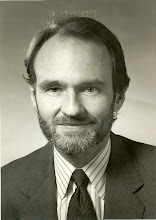Results this week fit satisfactorily with anchors set earlier, Canada the exception.
In the US, jobs-related activity continues to “surprise.” Thursday’s Claims print was better than expected; it is at a 4-year low and has been on a declining trend since last September. It was last October and again early Q1 that we predicted jobs-related activity would flatten street forecasts, and why, and for clients to count on it. Understanding this dynamic was the single most important factor in isolating the recent major change in trend for US growth; actually the key major change in trend for the entire free world for without the US engine, the rest are sunk.
In the E-Z we saw that Euro-area services and manufacturing activity in March contracted more than economists forecast, much based on declining domestic demand. It is better to be prepared for these results, than to have to react. The E-Z is sliding into a recession so don’t let that be a surprise. We had predicted that E-Z results would “disappoint,” that observers would miss on their forecasts. This included those for Germany.
Key to understanding reality for 2012 for the E-Z is to understand that bank credit will prove elusive for most borrowers. There are other retardants, but this is the one that was not priced in. ECB generosity will not trigger a lending revival; it won’t happen.
Early Q1 we predicted that UK consumer activity would just exceed estimates – not vigor but more than predicted - yet Thursday’s Feb Retail Sales print was inside of expectations (-0.8% vs -0.6%, consensus). We would fade this print. It is well known that this series is volatile this time of year. And if we back up a tad, we see that Sales in the three months to Feb were +1.7% higher than a year ago, the largest increase since Dec/09. Most forecasters were predicting a decline. So we’re ok with our anchor for this credit.
Events in Canada have not fit. Jan Retail Sales (although ancient history), at +0.5% was far inside of expectations, and not the result we expected. We had predicted something more from this credit than she will deliver over the near term.
Observers were shocked this week to learn a private PMI survey of China’s Mar industrial activity was lower than expected, at 48.1, a contraction, and especially in new orders and exports. Of course the government has their own PMI; it was 51 for Feb. Not bad, but then nobody believes the government. Our view is not to panic; the private flash PMI (HSBC) is skewed as it surveys mostly smaller firms which have less access to bank credit than larger firms. There will be no “hard landing.”
Finally, crude remains the piano overhead. Well-known supply constraints persist (thank you Obama), seasonal formula changes, and of course, the mullahs’ choreography.
Average gasoline prices in the US are now the highest ever recorded for March. There is not a threat these will erode consumption; it is now a reality (and of course all energy related activity, not just the consumer). If conditions trigger $5 at the pump and for an extended period, then those conditions will bring growth to a near halt. Whether substantive or not, $5 will have a tremendous psychological impact on the consumer.
Robert Craven

No comments:
Post a Comment